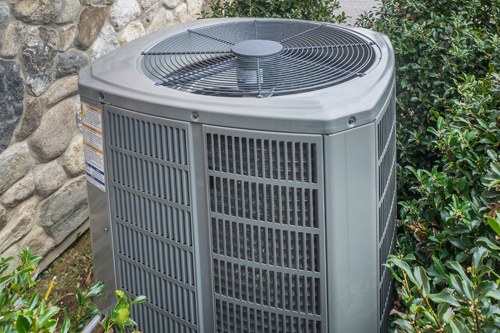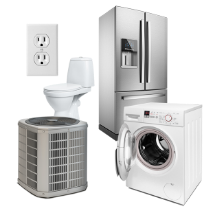Understanding Your Air Conditioner
If you want to maintain your home’s most important systems for years to come, it helps to know how they work in the first place. This guide will help you understand what’s going on inside your air conditioner so you can identify potential problems and keep your home cool all summer long.
How it Works
Powered by electricity, an air conditioner pumps refrigerant through a closed system of lines that connect exterior and interior units. When the fan clicks on, it pulls warm air from the interior of a home through vents and into ductwork behind the walls.
When refrigerant moves from the interior evaporator coil to the external condenser/compressor coil, it absorbs heat from the inside air as it turns from a liquid to gaseous state. This cools the air by transferring the heat to the refrigerant before it is converted back into a liquid and pushed back outside to be dissipated. This effectively cools the air, which is then pushed into connecting ducts and through air filters that lead to the vents in your home. As this refrigeration cycle continues, your home’s internal air gradually cools, creating a more comfortable environment.
While it all sounds relatively simple, an air conditioner requires several critical components to properly function. Most central air conditioners consist of split or two-part systems, which include:
- Evaporator coils inside the home, along with an outdoor unit with a fan, compressor/condenser coil
- Refrigeration pipes and/or lines that run from the interior unit to the exterior unit
- Refrigerant chemicals which move throughout the pipes or lines from the outside and interior equipment
- Vents and ductwork that funnels warm and cool air in and out of the home
- A thermostat designed to control the system and manipulate temperature settings
- Replaceable air filters to remove particulates from the air as it moves through the system
Maintaining Your Air Conditioner
It’s important to note that air conditioners do more than just cool a home; they also help regulate indoor air quality for a healthy indoor environment. By consistently circulating air, air conditioners help control moisture levels, eliminate odors and remove allergens along with particulates and volatile organic compounds (VOCs). This is why it’s so important to change your filters every one to six months and schedule cleanings and inspections once a year. It’s also important for homeowners to learn the signs of potential air conditioner problems, including strange noises, refrigerant leaks, foul odors, higher energy bills and inconsistent temperatures.
You can reduce the risk of problems by following these guidelines for air conditioner efficiency. You can also reduce the risk of breakdowns by protecting your system in the winter and by scheduling routine maintenance at least once every year. In addition to protecting your air conditioner from potential breakdowns, this will help it run more efficiently so your home stays cooler and your energy costs stay low.
Unfortunately, if your air conditioner does break down, you may end up paying hundreds to thousands of dollars in repair costs. This is why so many homeowners acquire Home Warranty Service Agreements to protect themselves from the high costs of system repairs. In addition to paying for repairing and/or replacing covered air conditioners, these valuable safeguards cover other key systems and appliances in a home, including plumbing, electrical, refrigerators, ovens and much more.
2-10 HBW offers the most comprehensive Home Warranty coverage for homeowners. Let us help you protect your home.








